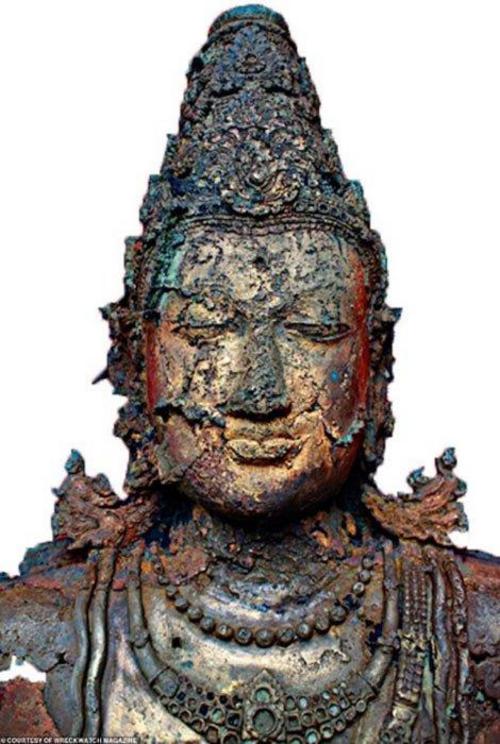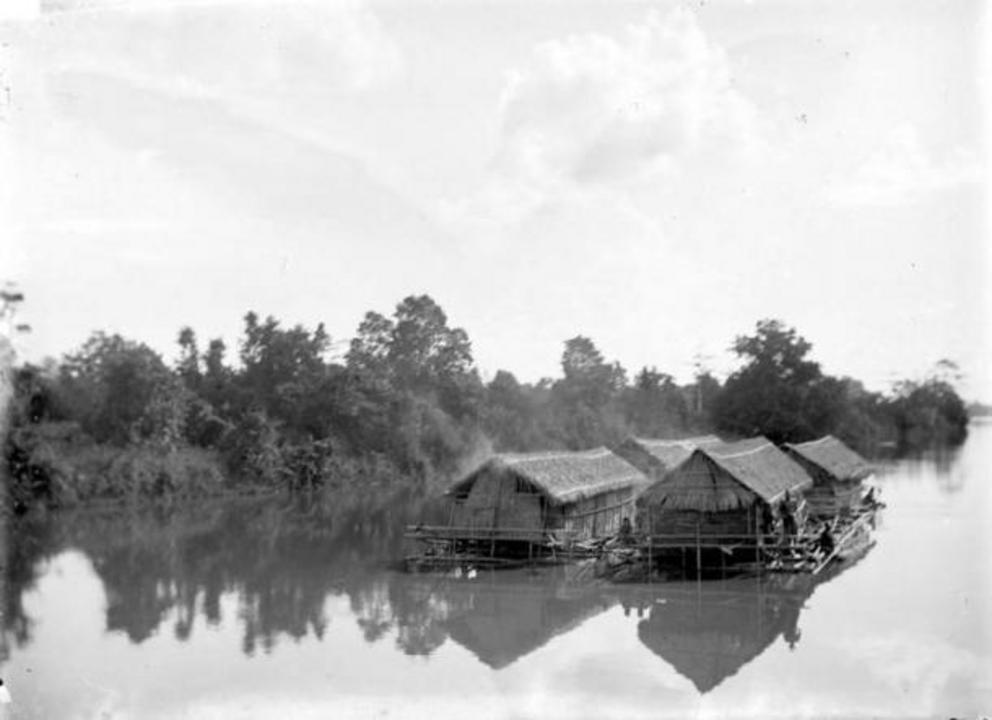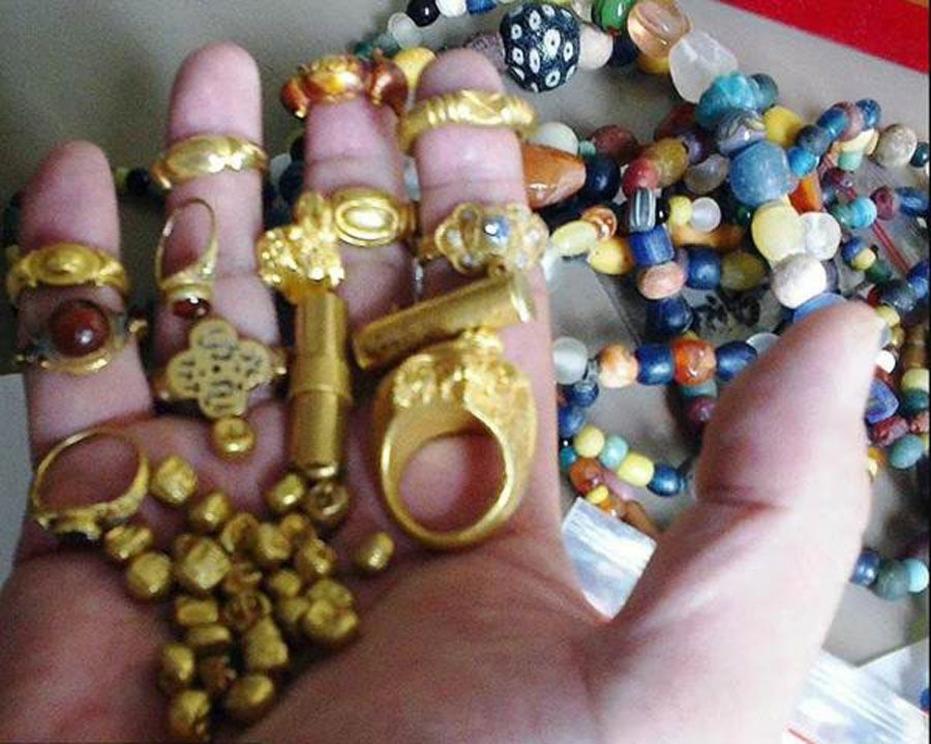Has Indonesia’s legendary lost island of gold been discovered?
Top image: Handful of gold rings, beads and gold coins retrieved by fisherman in the River Musi and believed to be artifacts left behind by the Srivijaya Empire’s long-lost Island of Gold.
Over the last 5 years, fishermen have recovered ancient treasures worth tens of millions of dollars from the Musi River, around Palembang, on the Indonesian island of Sumatra. The big question being asked by one archaeologist is whether or not these treasures are remnants of the long-lost Srivijaya Empire, a legendary kingdom known as the Island of Gold?
The Srivijaya Empire flourished between the 7th and the 13th centuries in what is now Indonesia. The kingdom was centered around Palembang, on the volcanic island of Sumatra, to the west of Java. Local folklore has it that the extraordinarily wealthy capital city of the Srivijaya Empire existed, and eventually “disappeared,” somewhere on Sumatra in the late 14th century.
According to an article in The Guardian , ancient Srivijaya was associated with an enormous wealth of gold and precious stones, and these fabled treasures have led hundreds of greedy explorers to bitter ends. Could it be that Sumatran fishermen have been plundering the legendary lost Island of Gold and selling its ancient treasures on the international black market ?
 A treasure haul of golden rings which could be evidence that Palembang is the location of the fabled Island of Gold.
A treasure haul of golden rings which could be evidence that Palembang is the location of the fabled Island of Gold.
Fisherman Raiders of the Island of Gold?
While the lost city of gold, El Dorado , remains firmly hidden in Colombia, the chief site of the Srivijaya Empire may finally have been found. Not, however, by a team of intrepid archaeologists, but rather by local night-diving fishermen on the Musi River. Illegal treasure hauls made over the last few years have included countless jewels and a rare 8th century life-sized Buddhist statue studded with precious gems, estimated to be worth millions of dollars.
Dr. Sean Kingsley is a British maritime archaeologist and his new research about this submerged site is scheduled to be published in Wreckwatch Magazine . The researcher told the press that the treasures being recovered are the sorts of things that “you might read about in Sinbad the Sailor… but they’re actually real.” If this is indeed the Island of Gold, Kingsley told The Guardian , it must have been a “waterworld.” The archaeologist also said the people must have lived on the river like modern boat people.
 Life-size bronze Buddhist statue, studded with precious gems, which was hauled up by fishermen in the Musi River. Could this priceless artifact lead archaeologists to the long-lost Island of Gold?
Life-size bronze Buddhist statue, studded with precious gems, which was hauled up by fishermen in the Musi River. Could this priceless artifact lead archaeologists to the long-lost Island of Gold?
Intricate, Rare, Historically Priceless, and Gone: Artifacts of the Island of Gold
The forthcoming Srivijaya study is going to be featured within a 180-page publication focusing on the history of China and the Maritime Silk Road . Kingsley said the maritime Srivijaya Empire “controlled the arteries of the Maritime Silk Road,” which were colossal 8th century markets in which local, Chinese and Arab goods were traded. For over 300 years, the rulers of Srivijaya controlled the valuable trade routes between the Middle East and Imperial China, leading to what Kingsley described as a “colossal wealth.”
Looking closer at the purposed Island of Gold artifacts being recovered from the river, among the gold and jewels were “everything from tools of trade and weapons of war to relics of religion.” Kingsley listed bronze and gold sword handles, mirrors, Buddhist figurines , bronze temple door-knockers, figures from Buddhist mythology and monks’ bells, as artifacts that have been recovered from the river. Hoards of gold rings with elaborate symbols were encrusted with rubies, while many of the golden ceremonial rings were detailed with 4-pronged vajra sceptres, the Hindu thunderbolt symbol, representing a favored weapon of the gods.
 Timber raft houses on the Musi River before 1917.
Timber raft houses on the Musi River before 1917.
Doctor’s Race to Save the Lost Island of Gold
Up until Dr. Kingsley stepped in with a modicum of control, the ancient treasures were being retrieved by fishermen using out-of-date diving equipment. Horrifically, most of the artifacts have already been sold to dubious antiquities dealers on the international black market for antiquities . This means that evidence pertaining to the rise, glory days and fall of Srivijaya “is dying anew without being told,” explained Dr. Kingsley.
The actual reasons that led to the collapse of the Srivijayan Empire are not yet clear, but Dr. Kingsley speculates that it may have been “Asia’s answer to Pompeii, falling victim to Indonesia’s bubbling volcanoes.” However, the professor also speculated that the “fast-silting, unruly river” could have swallowed the ancient city and its treasures.
Ancient Origins will cover this story as it unfolds, and hopefully we will be able to announce that the Island of Gold has indeed been identified very soon. The haunting question is, if this is not the legendary lost Island of Gold, what is the treasure chamber that lies beneath the Musi River and who put it there? And how can archaeologists protect our ancient history from the illegal antiquities black market ?

